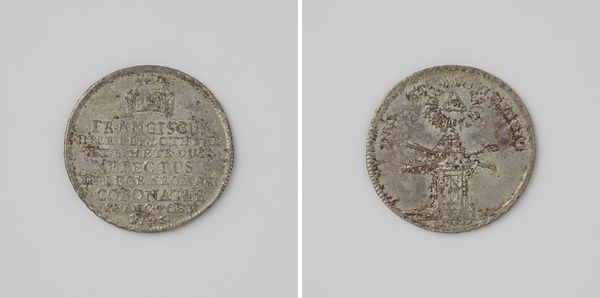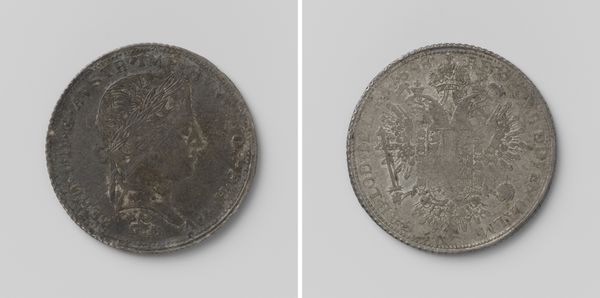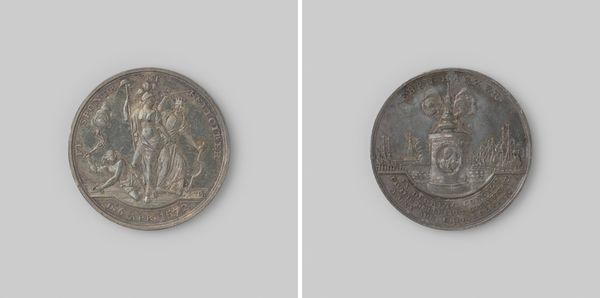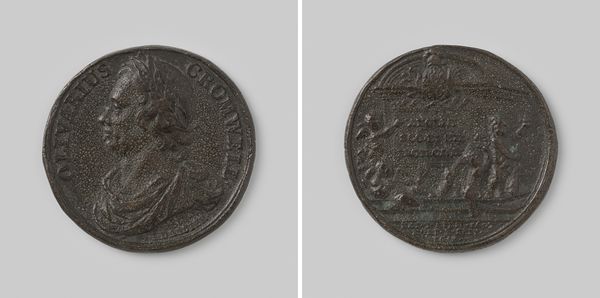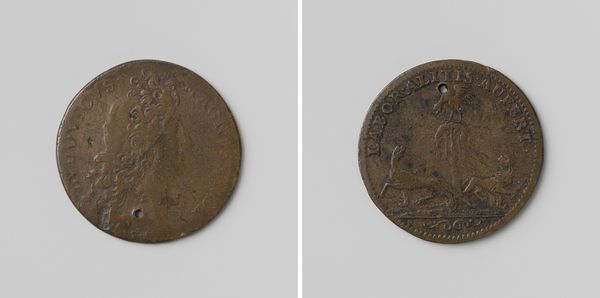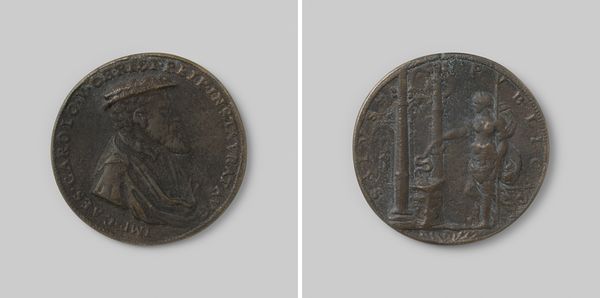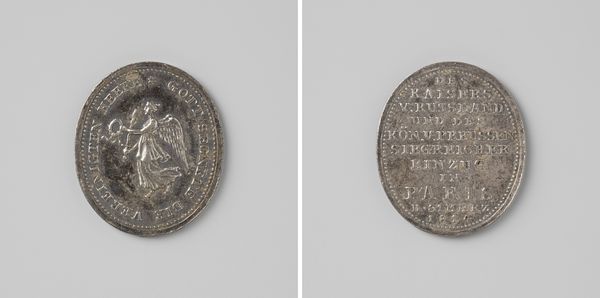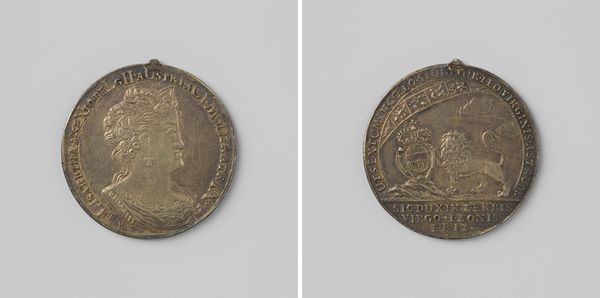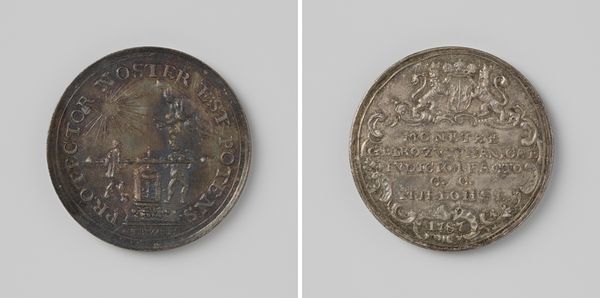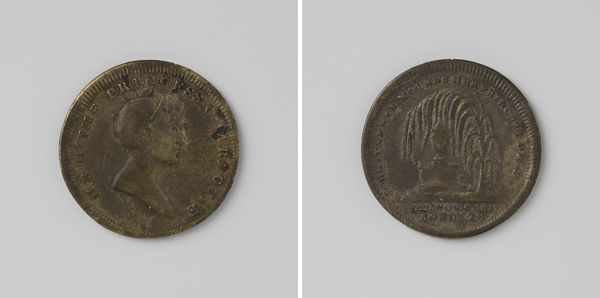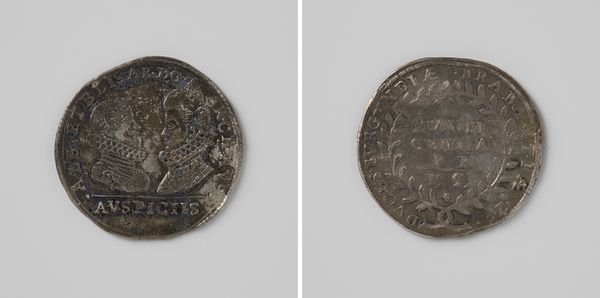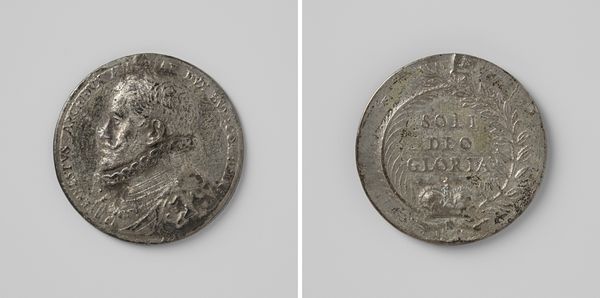
Willem V, prins van Oranje-Nassau, draagteken vervaardigd uit duit van stad Utrecht 1790 - 1795
0:00
0:00
metal, relief, sculpture
#
portrait
#
neoclacissism
#
metal
#
sculpture
#
relief
#
sculpture
Dimensions: diameter 2.4 cm, weight 2.73 gr
Copyright: Rijks Museum: Open Domain
Editor: Here we have "Willem V, prins van Oranje-Nassau, draagteken vervaardigd uit duit van stad Utrecht", made sometime between 1790 and 1795 by an anonymous artist. It’s currently held at the Rijksmuseum, and it’s crafted from metal, a type of relief sculpture. The detail for something so small is impressive! What jumps out to you about it? Curator: The object presents a compelling study in form and materiality. Notice how the incuse relief on the reverse side, with its stark typography, contrasts sharply with the raised, almost ethereal, profile of Willem V. This interplay creates a visual tension. How do you perceive the relationship between these two sides, formally? Editor: Well, the portrait side is more detailed and feels almost like a celebration of the prince, while the back with just text feels functional and austere. Like two separate ideas pressed together. Curator: Precisely. Consider the rim of the portrait; a patterned border which appears purely decorative. How does that linearity affect the way you view the central figure? Editor: It definitely frames him, making him seem more important and set apart. Is that bordering, perhaps, meant to draw our eye to the prince's... perhaps perceived importance, or status, above the average person? Curator: The strategic employment of such framing devices inherently directs the viewer’s gaze, structuring how the image is consumed. The portrait uses layering and dimensionality, with that ornate relief playing off of what otherwise may have been a less noticeable sculpture. Editor: It's amazing to think about how even small choices, like the texture of the border or the font on the back, really shape the whole experience. I'll never look at a coin the same way. Curator: Indeed. Analyzing the formal qualities, deconstructing the artistic choices—this deepens our comprehension and heightens our appreciation.
Comments
No comments
Be the first to comment and join the conversation on the ultimate creative platform.
